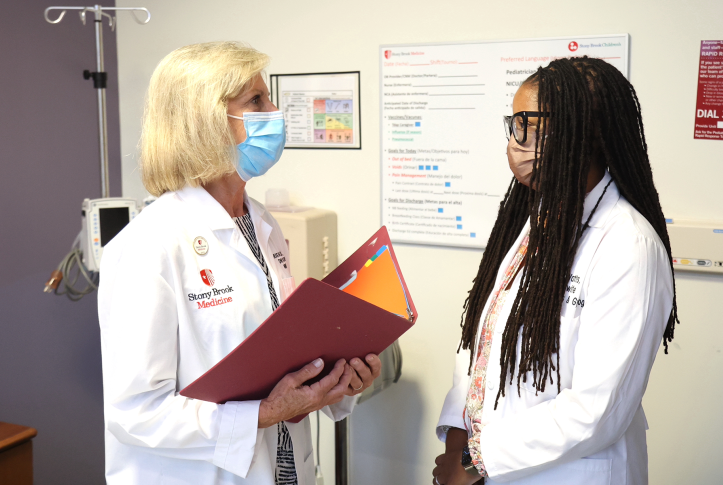While the case for race-conscious affirmative action in undergraduate admissions policies may have failed, the story is far different when it comes to medical education and health professions training. As a mountain of evidence makes clear, the argument for diversity in health care remains powerful.
According to the decision handed down by the U.S. Supreme Court in Students for Fair Admissions, Inc. v. President and Fellows of Harvard College, race consciousness in admissions policies for undergraduate education cannot stand because it does not meet the “strict scrutiny test.” Under this test, entities must show that use of racial classifications furthers a compelling interest, and that consideration of race is necessary to advance that interest.
The Court concluded that the justification adopted for nearly 50 years — student diversity is a core goal of higher education programs — will no longer be recognized as a compelling interest. The measure is too vague to survive judicial scrutiny, according to the majority, as it is a distinction “found only in the eye of the beholder.” Even if such a goal were defensible, the two universities at the heart of the case, Harvard and the University of North Carolina, could not defend why only certain racial groups qualified for a “tip” or could be considered a “plus” factor while others failed to do so. Indeed, the Court, along with Justices Gorsuch and Thomas in their individual concurrences, called into question the integrity and reliability of the entire governmental racial classification system. In dismissing Justice Jackson’s dissent, Thomas said: “Justice Jackson uses her broad observations about statistical relationships between race and select measures of health, wealth, and well-being to label all blacks as victims.”
Striking disparities in U.S. health outcomes, however, underscore that no colorblindness exists wherever health and health care are concerned. The courts have all the data they need to draw this distinction. Evidence of avoidable health problems and premature death among certain racial and ethnic groups — perhaps most visible in the worsening maternal mortality crisis — is enormous. So, too, is evidence of a looming health care workforce shortage, particularly among health professionals of color. As it currently stands, Black men make up less than 3 percent of all physicians, and under 1 percent identify as American Indian, Alaska Native, Native Hawaiian, or other Pacific Islander. And despite the tremendous need for a more equitable maternal health care system, today less than 6 percent of midwives identify as Black.
Why Diversity in Health Care Matters
Research shows that a diverse and representative health care workforce improves patients’ access to care, their perceptions of the care they receive, and their health outcomes, especially for patients of color. When Black patients are treated by Black doctors, they are more satisfied with their health care, more likely to have received the preventive care they needed in the past year, and are more likely to agree to recommended care like blood tests and flu shots. Other studies have documented measurable gains in access, quality, and health outcomes when patients’ health care teams mirror their personal characteristics and thereby foster relationships that engender respect, empathy, and trust.
Diverse health care teams also benefit the clinicians who are part of them, by promoting a practice environment that leads to improved learning and outcomes. Finally, we know that physicians of color are more likely to build their careers in medically underserved communities — and that state affirmative action bans have resulted in a huge loss of Black and brown students in the health professions.
What We Can Do to Promote Diversity
Fortunately, there are several pathways to achieving greater diversity in the health professions. For example, the University of California, Davis, a leader in diversification of health professions training, has a program — UC Programs in Medical Education (UC PRIME) — that prepares medical students to practice in underserved communities. Medical schools at historically Black colleges and universities, which already educate an overwhelming proportion of physicians of color in the United States, also will be crucial for efforts to create a truly representative clinical workforce — one capable of fostering the all-important trust relationships that leads to greater use of high-value care.
But we must also tackle structural inequities that limit racial and ethnic diversity. These efforts include greater use of adversity scores in admissions to account for students’ family income and their educational and environmental circumstances; tracking diversity among health care providers; and investing in innovative training programs that direct more candidates of color to the health professions.
As we move forward, the following actions will be necessary:
- Monitoring the impact of policy changes. The effects of policies and legislation on diversity in health care must be chronicled. Such tracking efforts in California revealed that the disbanding of the state’s affirmative action program led to plummeting diversity in California medical schools until state leaders undertook remedial action that helped stem the loss.
- Prioritizing health and racial equity. As concerns grow about the ripple effects of the Supreme Court decision, we need to step up efforts to address inequities in health care outcomes, access, and quality — including through policy priority-setting, regulation, and expanded insurance coverage.
- Diversifying the health workforce. Intentional efforts are needed to strengthen pipelines into the health professions for people of color. We also need to continue to grow the evidence base on which diversity as a key goal rests and elevate race consciousness in health professions programs — not shrink from it.





